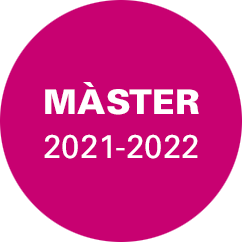APPROACH AND OBJECTIVES
This work is situated within the framework of history and cultural studies. He wants to analyze the construction mechanisms of alterity from a gender perspective; see how the discourses of gender and construction of alterity are interrelated in a complex way. To do this, we have focused on the analysis of the Spanish colonial discourse on Morocco, understood as a discourse on the construction of alterity. Therefore, we have analyzed how Moroccan women appear in this discourse and we have tried to find out what role this representation of women plays in the framework of this colonial discourse.
As Saïd affirms, during the colonial period, through a coherent discourse (Orientalism), non-European peoples are built as inferior, barbarous, uncivilized, as “oriental”, as the “other” for excellent lencia. In the Spanish case, there is also an orientalist discourse: Africanism. Within the framework of these processes of construction of alterity, we must take into account an element that is primordial, but often not explicit, in the representation of alterity: gender discourses. As Juan Scott affirms, these can not be separated from other social realities, it is worth wondering what gender construction and symbolic representations of femininity are evoked in each specific context and why. In our case, we have started from the premise that, in the context of the Spanish colonial discourse on the Moroccan people, the descriptions of women do not appear only for ethnographic interest, but this sensitive aspect has a specific function in the representation of the Moroccan culture as a whole.
In this work we proposed ourselves to:
· Analyze (I) the gender discourse that is built on the Moroccan society in the Spanish colonial discourse. (II) Analyze the various cultural representations of femininity that appear in this discourse and the mechanisms through which they are elaborated.
· Find out how this gender discourse helps define, value Moroccan culture, build it in terms of alterity.
· Given the role played by this gender discourse in the construction of alterity, understand why Moroccan women appear represented in certain terms, defined with certain characteristics, in this discourse.
CONCLUSIONS
Once the documentation has been analyzed, we have verified that (I) in this colonial discourse, women are represented not only as uncivilized or children (elements of an orientalist discourse), but also, their femininity and their role as women, in society. We must interpret that a complex but negative gender discourse is elaborated (it is affirmed that women, in Moroccan society, can not develop the supposedly “natural” qualities and roles of women, such as being a wife and mother). This discourse is constructed as a reversal of the current model of femininity in Spain. (II) We also find, in this discourse, a stereotyped representation of women that is constructed in a complex way: through Orientalist elements, but also under the premise of the negation of subjectivity or feminine individuality. Finally, we can say, then, that we have answered the initial question: why in this colonial discourse does it evoke a specific gender discourse and a representation of determined femininity? The gender discourse that the author elaborates on Moroccan society is a decisive cultural resource in the delegitimization and inferiorization of Moroccan culture, in its representation as inferior and decadent. Through what mechanisms: Moroccan women are conceived as representatives of the entire collective, but, within the framework of colonial discourse, they do not represent their own identity and values but embody absolute alterity. Finally, we have seen how the overlap between gender and cultural alterity is interdependent: we can not only say that a certain gender discourse contributes to the construction of alterity, but also that gender discourse fulfills this function of constructing Moroccan culture in terms of alterity is a primordial explanatory element, although often overlooked, to understand the characteristics of the cultural representations of gender that appear in this discourse.



